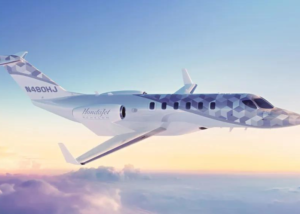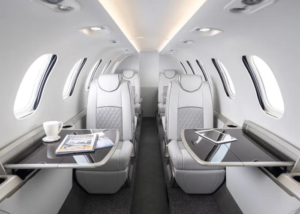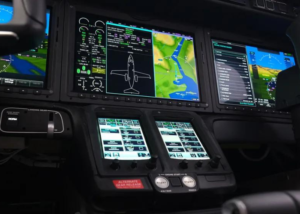Rachel Cormack from Robb Report – Reports
The Echelon will be capable of covering 2,625 nautical miles and soaring to 47,000 feet. Honda Aircraft Company’s new business jet is a perfect match for high fliers.

Honda Aircraft Company
Christened the HondaJet Echelon, the aircraft is the production version of the groundbreaking 2600 Concept unveiled in 2021. Designed for the upper echelons of aviation, the newcomer promises high levels of comfort, performance and efficiency.
It is set to hit heights never before reached by a light jet, too. The Echelon will have a range of 2,625 nautical miles (3,020 miles), making it capable of nonstop transcontinental flight across the U.S. It will reach a maximum cruising speed of 450 knots and an industry-leading flight ceiling of 47,000 feet, according to Honda. On top of that, the Echelon will be 20 percent more efficient, releasing fewer carbon emissions than the average light jet.

The cabin will be available in three different modular layouts: Executive, Dual Club and Divan. Each set-up offers ergonomic seating for up to 11 fliers, with generous legroom, headroom and baggage space. (Limiting the load to five people will keep the plane at its most efficient.) The aircraft also has a full-height galley in front and a massive cargo hold.
The cockpit will be equipped with advanced flight tech and automation features. Systems such as auto throttle and auto brake make the plane easier to fly and control. The Echelon can be operated by a single pilot, in fact.
“The HondaJet Echelon was born to create a new category that transcends the travel experience on conventional light jets,” Honda Aircraft Company president and CEO Hideto Yamasaki said in a statement. “Expanding mobility skyward has been Honda’s long-lasting dream, and the HondaJet Echelon marks the exciting next chapter while showcasing a classic Honda story of a product that creates new value for people.”

Production of the Echelon will take place within Honda Aircraft Company’s global headquarters in Greensboro, North Carolina. Early build processes are scheduled to begin in 2024. The first flight is planned for 2026, followed by type certification in 2028.